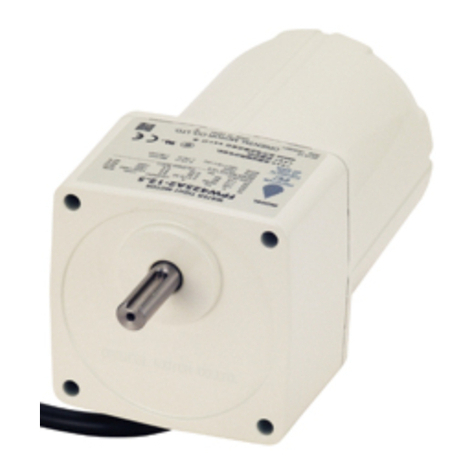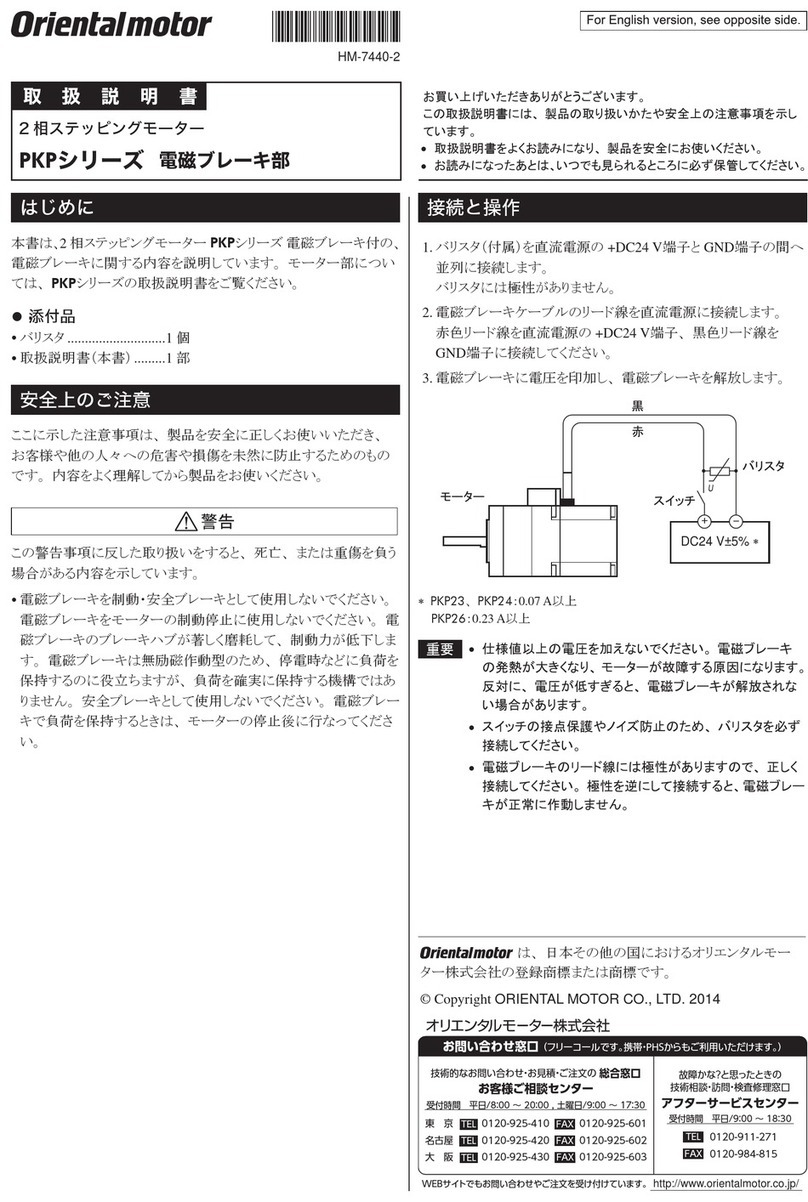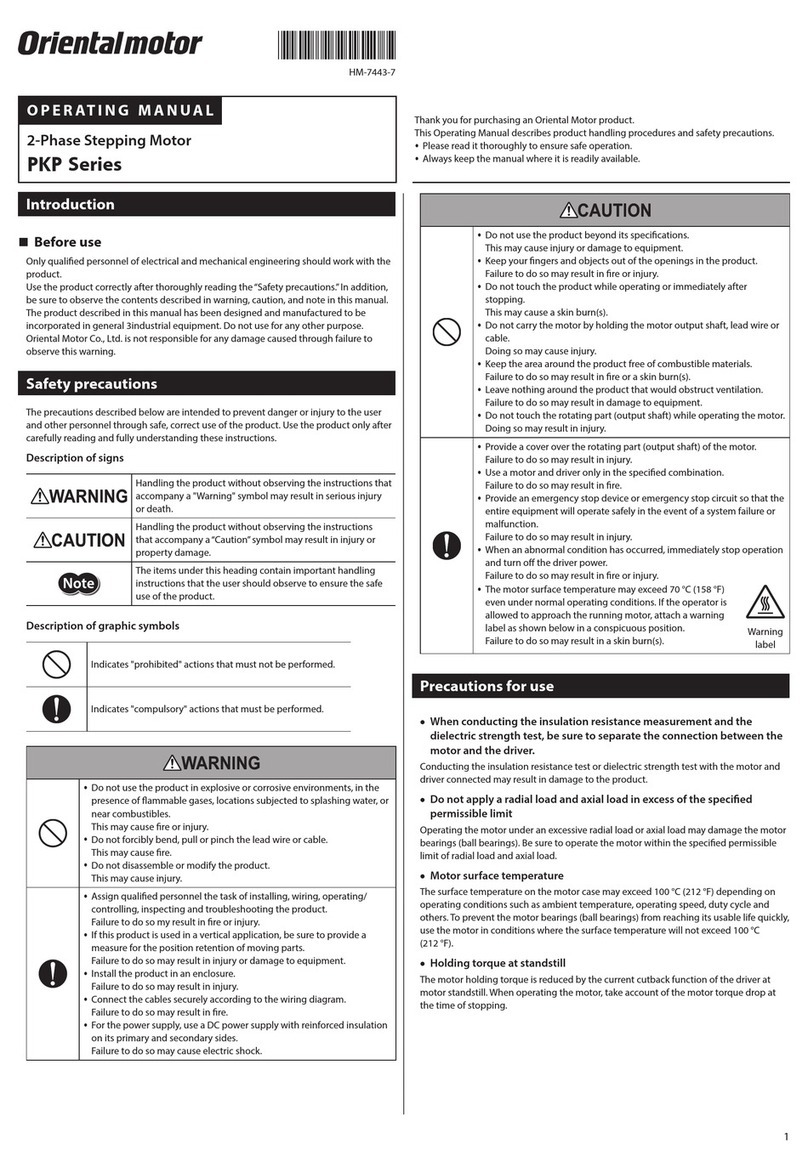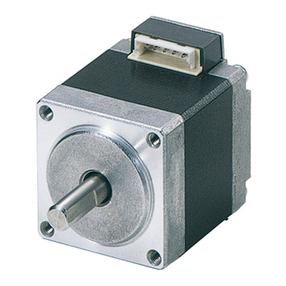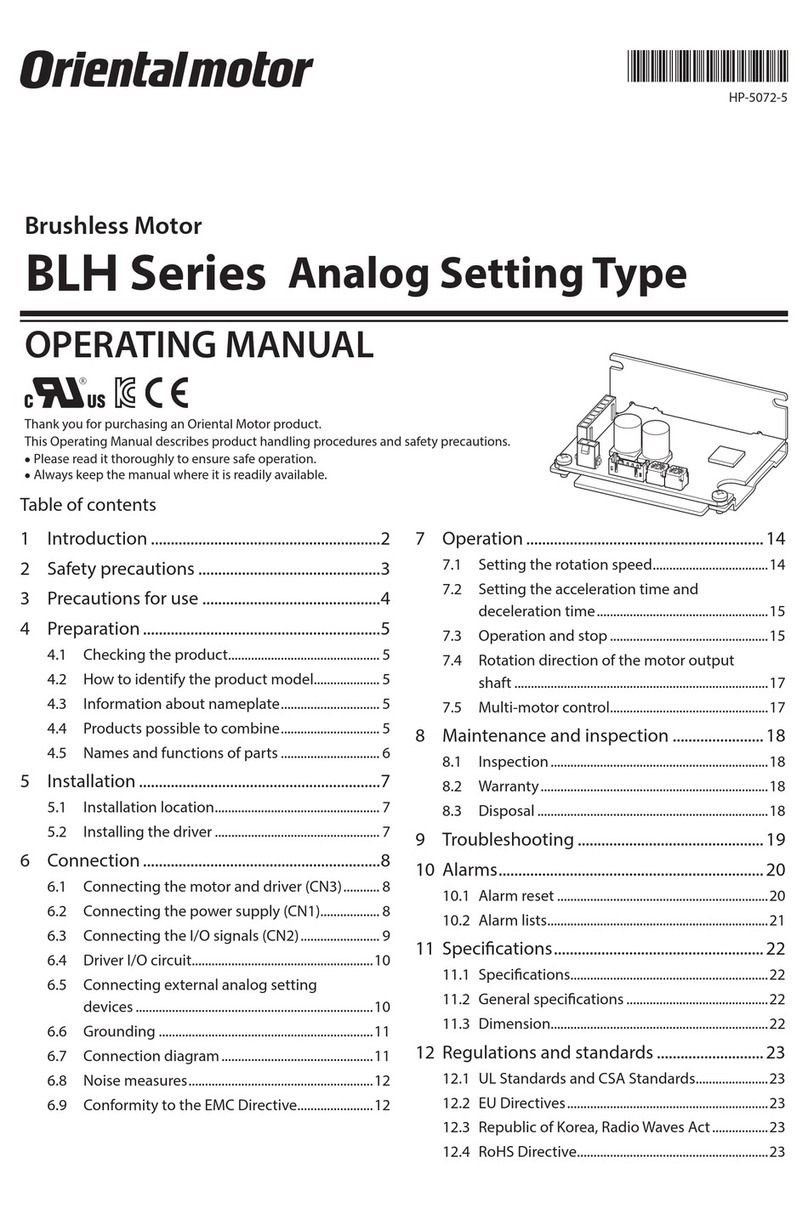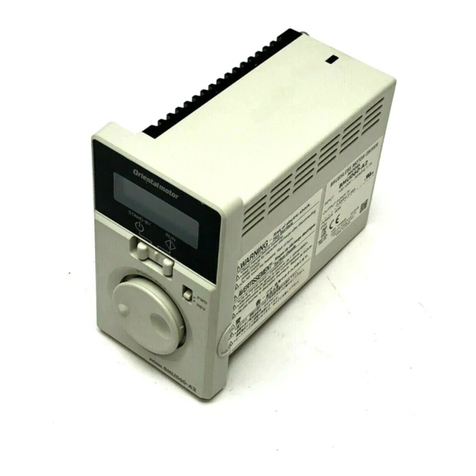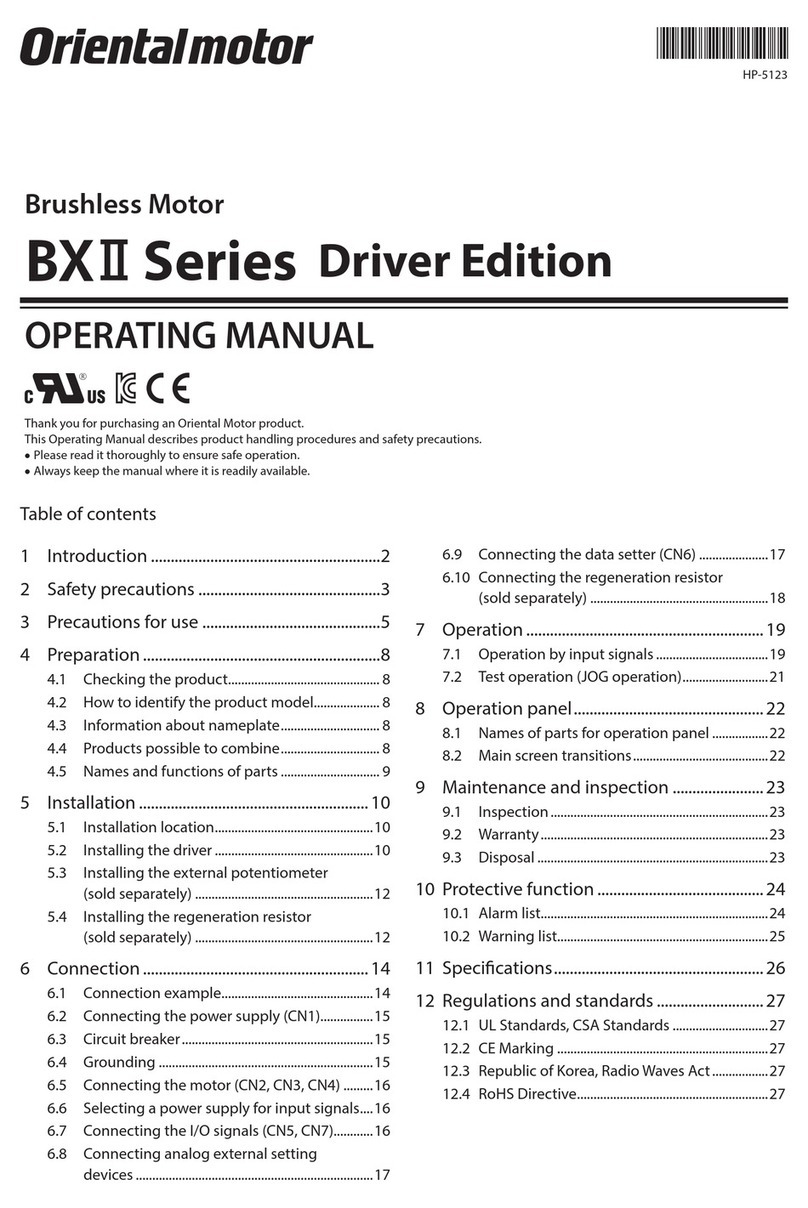
Precautions for use
−6−
3 Precautions for use
This chapter covers restrictions and requirements the user should consider when using the product.
Be sure to match the motor output power with the driver output power.
zConnect protective devices to the power line
Connect a circuit breaker or earth leakage breaker to the driver’s power line to protect the primary circuit. If an earth
leakage breaker is to be installed, use one incorporating high-frequency noise elimination measures. Refer to "Preventing
leakage current" below for the selection of protective devices.
zDo not perform vertical drive (gravitational operation)
The product will not be able to control the motor speed if an operation that the motor output shaft is externally rotated
is performed (vertical drive etc.). Also, if vertical drive is performed, since the inverter primary voltage of the circuit may
exceed the permissible range, the protective function may be activated. As a result, the motor may coast to a stop and the
load may fall.
zDo not use a solid-state relay (SSR) to turn on/o the power
A circuit that turns on/o the power via a solid-state relay (SSR) may damage the motor and driver.
zDo not conduct the insulation resistance measurement or dielectric strength test with the motor and driver
connected
Conducting the insulation resistance measurement or dielectric strength test with the motor and driver connected may
result in damage to the product.
zGrease measures
On rare occasions, grease may ooze out from the gearhead. If there is concern over possible environmental damage
resulting from the leakage of grease, check for grease stains during regular inspections. Alternatively, install an oil pan or
other device to prevent leakage from causing further damage. Grease leakage may lead to problems in the customer’s
equipment or products.
zCaution when using under low temperature environment
When an ambient temperature is low, since the load torque may increase by the oil seal or viscosity increment of grease
used in the gearhead, the output torque may decrease or an overload alarm may generate. However, as time passes, the
oil seal or grease is warmed up, and the motor can be driven without generating an overload alarm.
zPreventing leakage current
Stray capacitance exists between the driver’s current-carrying line and other current-carrying lines, the earth and the
motor, respectively. A high-frequency current may leak out through such capacitance, having a detrimental eect on the
surrounding equipment. The actual leakage current depends on the driver’s switching frequency, the length of wiring
between the driver and motor, and so on. When connecting an earth leakage breaker, use one of the following products
oering resistance against high frequency current:
[ Mitsubishi Electric Corporation: NV series ]
zNoise elimination measures
Provide noise elimination measures to prevent a motor or driver malfunction caused by external noise. For more eective
elimination of noise, use a shielded I/O signal cable or attach ferrite cores if a non-shielded cable is used. Refer to p.44
for the noise elimination measures.
zConnecting the motor and driver
Be sure to connect the connector type motor and the driver using the dedicated connection cable (sold separately).
The maximum distance between the motor and driver is 10.5 m (34.4 ft.), and the connection cables are provided up to 10
m (32.8 ft.). Limit the number of times so that attaching/detaching between the connection cable and the motor or driver
will not exceed 100 times.
zThe driver uses semiconductor elements, so be extremely careful when handling them
Electrostatic discharge can damage the driver.
Be sure to ground the motor and driver to prevent them from being damaged by electric shock or static electricity.
zSaving data to the non-volatile memory
The display blinks while pressing the setting dial to set the data or initializing the data (about 5 seconds). Do not turn o
the power supply while the display is blinking. Doing so may abort writing the data and cause an EEPROM error alarm to
generate. The non-volatile memory can be rewritten approximately 100,000 times.


